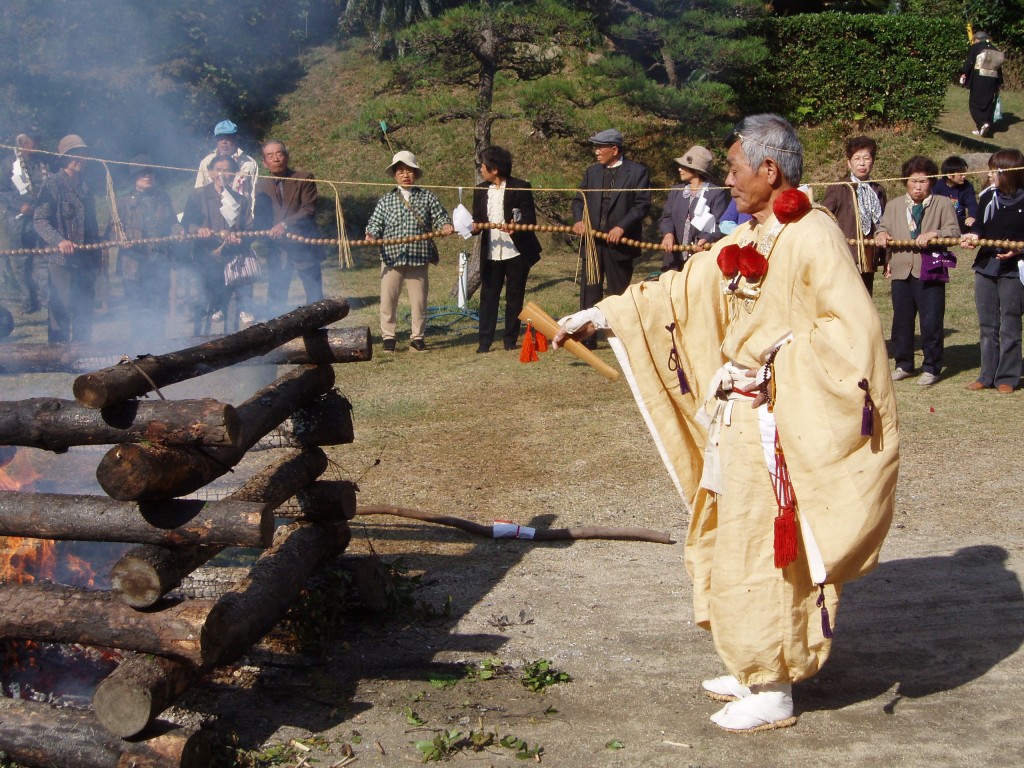
A Yamabushi (mountain ascetic) conducts a fire rite in which wooden prayer tablets are borne on the smoke up to heaven
In 1956 Gary Snyder came to Kyoto to study Zen. He stayed several years, wrote poems and kept a journal which sheds light on the city and its characters in those heady postwar times. One of the most interesting accounts he wrote was of his experiences with Mountain Asceticism, or Shugendo. A lengthy piece about it appeared in the Kyoto Journal, from which the extracts below are taken (with thanks to the KJ managing editor Ken Rodgers).
**********************
In the first part, Snyder gives a general description of Shugendo, which includes this short historical overview:
The sixth-century En no Gyoja, alleged founder of Shugendo
It must have started as prehistoric mountain-spirit folk religion. The Yamabushi (“those who stay in the mountains”) are back country Shaman-Buddhists with strong Shinto connections, who make walking and climbing in deep mountain ranges a large part of their practice. The tradition was founded in the 7th or 8th centuries CE by En-no-Gyoja, “En the ascetic,” who was the son of a Shinto priest from Shikoku. The tradition is also known as Shugendo, “the way of hard practice.” The Yamabushi do not constitute a sect, but rather a society with special initiations and rites whose members may be lay or priest-hood, of any Buddhist sect, or also of Shinto affiliation. The main Buddhist affinity is with the Shingon sect, which is the Sino-Japanese version of Vajrayana, esoteric Buddhism, the Buddhism we often call “Tibetan.” My mountain friends told me that the Yamabushi have for centuries “borrowed” certain temples from the Shingon sect to use as temporary headquarters. In theory they own nothing and feel that the whole universe is their temple, the mountain ranges their worship halls and zendos, the mountain valleys their guest-rooms, and the great mountain peaks are each seen as boddhisattvas, allies, and teachers.
A yamabushi in typical clothing leads a hiking group into the Yoshino hills
The original Yamabushi were of folk origin, uneducated but highly spiritually motivated people. Shugendo is one of the few [quasi] Buddhist groups other than Zen that make praxis primary. Zen, with its virtual requirement of literacy and its upper class patrons, has had little crossover with the Yamabushi. The wandering Zen monk and the travelling Yamabushi are two common and essential figures in No dramas, appearing as bearers of plot and resolvers of karma. Both types have become Japanese folk figures, with the Yamabushi the more fearful for they have a reputation as sorcerers.
*********************
The second part of the Kyoto Journal article consists of Snyder’s notes about a five-day Shugendo experience when he slept in the mountains and performed rituals like a yamabushi. This passage is taken from Day One:
Yoshino village of sakura-blooming hills, cherries planted by En-no-Gyoja (“ascetic” but it would work to translate it “mountaineer”) as offerings to Zao the Mountain King. In a sense the whole of Yoshino town stands as a butsudan / altar. So the thousands of cherry trees make a perennial vase of flowers — (and the electric lights of the village the candle?) — offerings to the mountain looming above. Here in the Zao Do is the large dark image, the mountain spirit presented in a human form, Zao Gongen — “King of the Womb Realm.” (“Manifestation (gongen) of the King (o) of the Womb (za).”
Zao Gongen, deity of Shugendo
I think he was seen in a flash of lightning, in a burst of mountain thunder, glimpsed in an instant by En the Mountaineer as he walked or was sitting. Gleaming black, Zao dances, one leg lifted, fierce-faced, hair on end. We four bow to this wild dancing energy, silently ask to be welcome, before entering the forest. Down at the end of the vast hall two new Yamabushi are being initiated in a lonely noon ceremony by the chief priest.
Zao is not found in India or China, nor is he part of an older Shinto mythology. He is no place else because this mountain range is the place. This mountain deity is always here, a shapeshifter who could appear in any form. En the Mountaineer happened to see but one of his possible incarnations. Where Fudo is an archetype, a single form which can be found in many places, Zao is always one place, holding thousands of shapes.
We adjust our packs and start up the road. Pass a small shrine and the Sakuramoto-bo — a hall to En the Mountaineer. Walk past another little hall to Kanki-ten, the seldom-seen deity of sexual pleasure. Climb onward past hillsides of cherry trees, now past bloom. (Saigyo, the monk-poet, by writing about them so much, gave these Yoshino cherry blossoms to the whole world.) The narrow road turns to trail, and we walk uphill til dusk. It steepens and follows a ridge-edge, fringe of conifers, to a run-down old koya — mountain hut — full of hiker trash. With our uptight Euro-American conservationist ethic we can’t keep ourselves from cleaning it up and so we work an hour and then camp in the yard. No place else level enough to lay a bag down.
I think of the old farmers who followed the mountain path, and their sacraments of Shamanist / Buddhist / Shinto style — gods and Buddha-figures of the entrance-way, little god of the kitchen fire, of the outhouse, gods of the bath house, the woodshed, the well. A procession of stations, of work-dharma-life. A sacramental world of homes and farms, protected and nourished by the high, remote, rainy, transcendent symbolic mountains.
Kimpusen-ji at Yoshino is the main Shugendo temple in Japan and houses a huge statue of Zao Gongen.

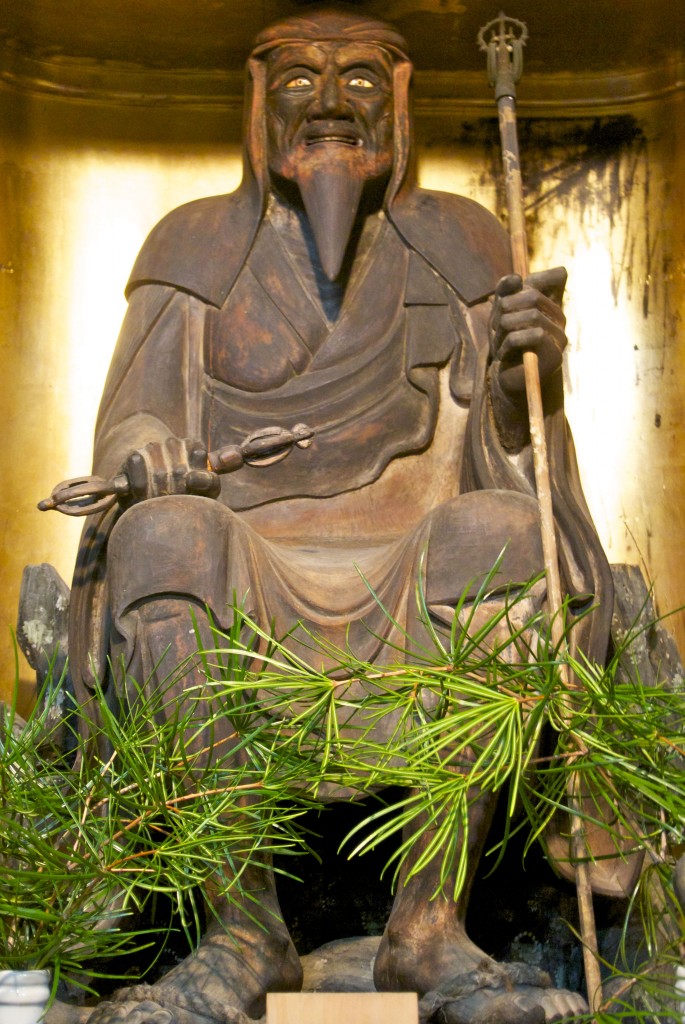
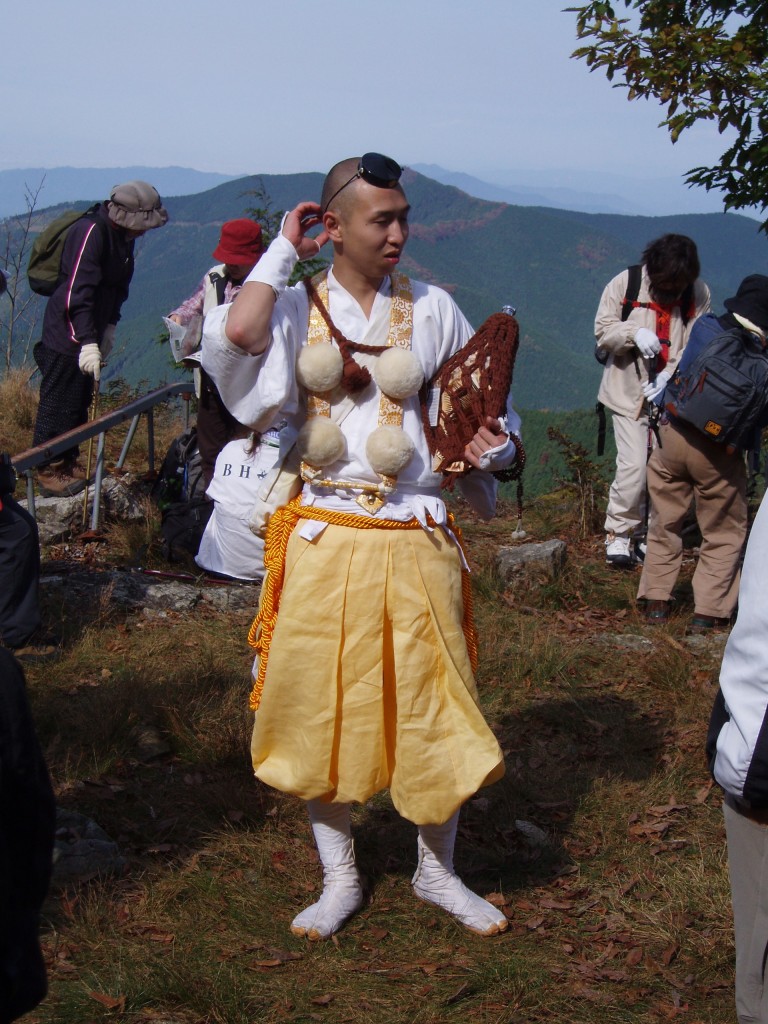
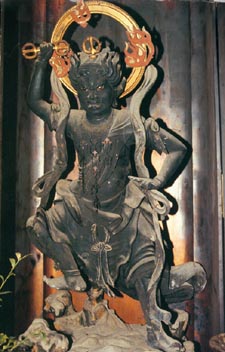
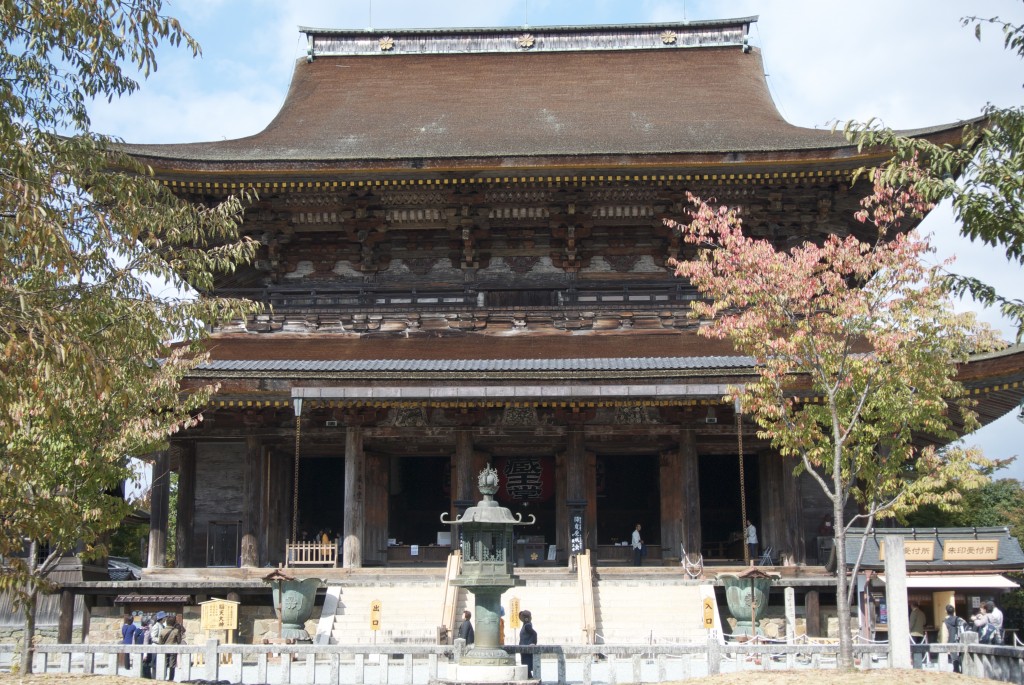
John, thank you so much for finding this archival reminiscence! Who knew that Gary Snyder experienced Shugendo in the 1950s? My great take-away from this is the word “mountaineer” for Gyoja. A brilliant translation.
Hello Stephen, thank you for the message. I’m glad you liked the article. I was struck by it too. However, I’m mystified about your translation comment. ‘Mountaineer’ doesn’t seem at all appropriate for Gyoja; it’s not simply a matter of climbing mountains, but of undergoing physical austerities and spiritual exercises. ‘Mountain ascetic’ seems much closer to the mark.